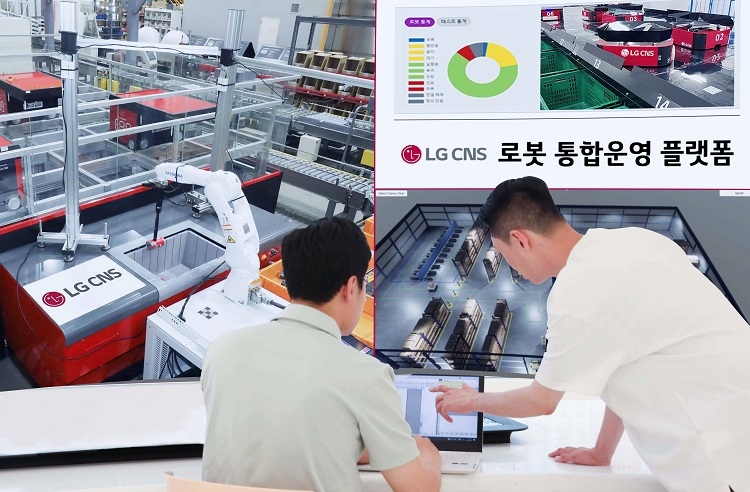Commercialization of LG CNS's Logistics Robots: How Are They Being Utilized?
※ This content was written with the assistance of LG CNS. The material, authored by a practitioner in charge of logistics automation at LG CNS, was edited and dispatched by Connectors. Connectors has announced that they will produce and freely release branded content, separate from their regular schedule of dispatching paid content at least five times a week.
In the past, logistics automation was considered one of the alternatives for maximizing Return On Investment (ROI) based on large-scale logistics center investments. However, in recent years, perceptions have begun to change, particularly with the COVID-19 pandemic and its transition to an endemic phase. The explosive increase in logistics volume during the pandemic highlighted that the workforce in logistics centers was insufficient and increasingly becoming inadequate. Consequently, the adoption of automation and robotic technology is now seen as a necessity rather than a choice for businesses.
Still, the substantial investment costs associated with automation can be a burden for many companies. The funds invested in robot purchases and software development could become sunk costs, which are irrecoverable.
To address these concerns, a business model that combines logistics automation with a subscription model is gaining popularity. Global robotics companies such as Fetch Robotics, 6 River Systems, Geek+, and Locus are competitively launching their own logistics robot subscription services.
As a company specializing in Digital Transformation (DX), LG CNS also launched a robot subscription service called 'RaaS (Robot as a Service)' last year. Additionally, they are continuously integrating various types of logistics robots to enhance their services.
This approach offers a viable solution for companies hesitant to commit to large-scale investments in automation. By adopting a subscription model, businesses can access the latest in logistics automation technology without the upfront costs associated with purchasing and implementing these systems. This not only mitigates the risk of sunk costs but also allows for greater flexibility in adapting to changing business needs and technological advancements.
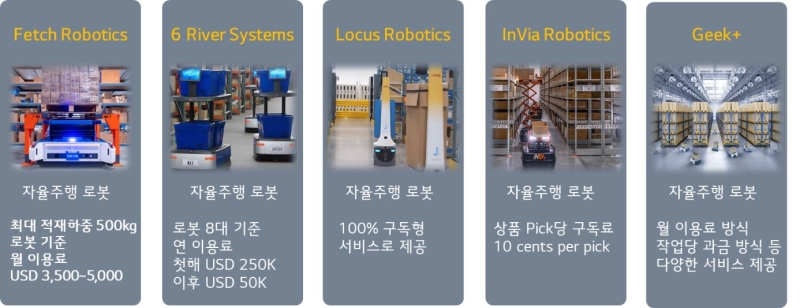
"Why 'Robot Subscription'?"
The reason LG CNS introduced RaaS (Robot as a Service) is clear: they saw the 'subscription-based' model as a means to solve the pain points of corporate customers. E-commerce, distribution, and manufacturing companies that need robot solutions previously had to spend a significant amount of money at once to purchase logistics robots. Additionally, efficiently managing and utilizing these robots with the appropriate software is not a simple task.
LG CNS's RaaS addresses these pain points all at once for corporate clients. Any corporate customer can easily rent the needed robots and introduce them without difficulty, with billing based on usage. The advantage of the subscription model lies in its flexibility. It allows for easy changes to the required robots in response to technological changes and shifts in the logistics market.
This model presents an efficient, cost-effective solution for companies, eliminating the need for large initial investments in robotic technology. It also provides the agility to scale up or down based on operational needs, making it an attractive option for businesses looking to stay competitive and adaptable in a rapidly evolving technological landscape.
① Hybrid RaaS
LG CNS's RaaS offers two main solutions to its customers. The first is Hybrid RaaS, a service designed for corporate clients already operating their own robots and other automated facilities. LG CNS provides these companies with a cloud-based robot service platform. Corporate clients can simply connect their existing automated equipment to LG CNS’s robot management software and receive services on a subscription basis.
The competitive edge of LG CNS’s robot subscription model lies in its ‘Robot Service Platform’. This platform implements interfaces with various heterogeneous robots, supporting the operation of robots tailored to the diverse requirements and spatial constraints of different logistics environments. LG CNS's robot service platform enables various robots in a logistics center to exchange information in real-time. This facilitates proper completion of logistics center operations processes like receiving, storing, and dispatching, by assigning tasks to each robot and collecting and monitoring the results of these tasks.
Task allocation and result monitoring for each robot are crucial since automated logistics centers require seamless connection between preceding and subsequent tasks. LG CNS's robot service platform uses robot orchestration to allocate tasks to individual robots. It then monitors completed tasks and the status of the robots to ensure continuous operation.
Additionally, in situations where bottlenecks, such as delays in worker processing, cause task accumulation in certain areas, LG CNS’s robot service platform plays a role in adjusting these situations so they do not disrupt the overall logistics flow. LG CNS has introduced optimization algorithms to reassign tasks in real-time and optimize the entire logistics process, maintaining efficiency even in the face of unexpected operational challenges.
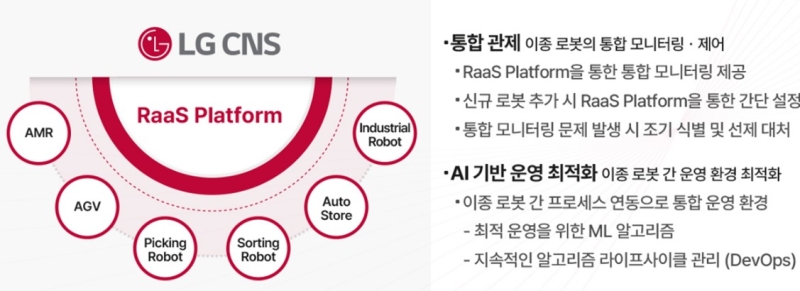
② Pure RaaS
The second solution offered by LG CNS's RaaS is Pure RaaS. This approach involves providing corporate clients not only with LG CNS's 'Robot Service Platform' but also the 'robots' themselves.
In the Pure RaaS model, LG CNS takes a more comprehensive role by supplying both the necessary robotics hardware and the software platform to manage and optimize these robots. This solution is particularly beneficial for companies that do not have existing automated logistics facilities or want to upgrade their current systems with advanced robotics technology.
The key advantage of Pure RaaS is that it allows companies to quickly and efficiently implement a fully integrated robotics solution without the need for significant upfront investment. Companies can access state-of-the-art robotics technology along with a sophisticated management platform, both tailored to their specific logistics needs.
This turnkey solution is especially appealing for businesses seeking to rapidly modernize their logistics operations. It enables them to benefit from the efficiency, accuracy, and scalability offered by advanced robotics without the complexity and risk associated with independently sourcing and integrating these technologies.
Overall, Pure RaaS is a flexible and cost-effective way for businesses to embrace logistics automation and stay competitive in an increasingly technology-driven marketplace.

LG CNS is actively investing in R&D and collaborating with various robotic solution partners to build its RaaS model. The company is expanding its robot lineup to include a variety of solutions that can be utilized in client logistics environments. This lineup includes not only AutoStore and ACR (Automated Case-Handling Robot) but also Automated Guided Vehicles (AGVs), Autonomous Mobile Robots (AMRs), picking robots, and Automated Guided Forklifts (AGFs).
This diverse range of robotic solutions allows LG CNS to offer customized automation options to meet the specific needs of different logistics environments. By partnering with leading robotic technology companies, LG CNS ensures that its RaaS model stays at the forefront of logistics automation innovation.
- AutoStore: A highly efficient storage and retrieval system that maximizes space utilization and speeds up the picking process in warehouses.
- ACR (Automated Case-Handling Robot): Designed for handling and transporting cases in warehouse environments, improving efficiency and reducing manual labor.
- AGV (Automated Guided Vehicle): These robots follow predefined paths for transportation of goods within a facility, enhancing movement efficiency.
- AMR (Autonomous Mobile Robot): More advanced than AGVs, AMRs navigate autonomously using sensors and maps, providing greater flexibility in dynamic environments.
- Picking Robots: Specialized in selecting and handling individual items or cases, these robots optimize the picking process, crucial in order fulfillment.
- AGF (Automated Guided Forklift): Used for lifting and moving heavy loads, AGFs improve safety and efficiency in material handling tasks.
By offering this extensive range of robotics, LG CNS's RaaS model caters to the varying demands of modern logistics operations, helping businesses streamline their processes, reduce costs, and improve overall efficiency.
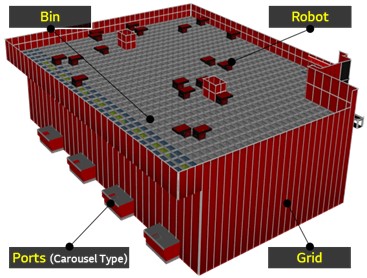
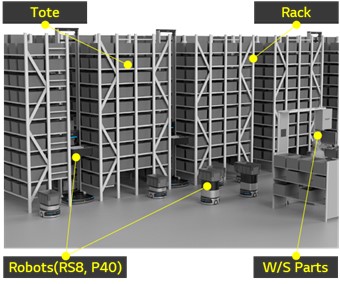
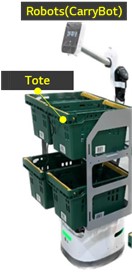
From the perspective of client companies, deciding which robots would optimize their logistics operations can be a challenging task. LG CNS addresses this issue by combining over 20 years of accumulated expertise in logistics automation with advanced technologies like AI, big data, and cloud computing. This enables them to offer customized services that meet the diverse requirements of their corporate clients.
Through this integrated approach, LG CNS assists businesses in maximizing their logistics efficiency and enhancing their competitive edge. By leveraging the power of these advanced technologies, LG CNS can analyze and understand the specific logistics needs of each client, recommending and implementing the most effective robotic solutions. This not only streamlines operations but also helps businesses adapt to rapidly changing market demands and technological advancements, ensuring they remain agile and competitive in the modern business landscape.
"Are there any actual use cases?"
The number of client companies using LG CNS's RaaS is gradually increasing. Proof of Concept (PoC) is also being conducted in the logistics sites of various client companies. Here, we will introduce a few representative examples.
Firstly, Company A, operating a Fulfillment Center, introduced robots to solve their labor shortage in the logistics center. Additionally, they needed a stable system operation capability. They subscribed to LG CNS's service platform, enhancing operational productivity and stability.
Secondly, Company B provides quick commerce services based on products stored in Urban MFCs (Micro Fulfillment Centers). B is utilizing LG CNS's RaaS at their logistics center (DC, Distribution Center) that supplies products to the MFC. They chose a robotic solution that allows efficient storage of a wide variety of products in a limited space, thereby achieving spatial, operational, and financial efficiency.
Companies that have adopted LG CNS RaaS commonly highlight two major strengths. The first is the ability to introduce a variety of robots as needed without high initial investment costs. The second is the elimination of the need to separately manage space and personnel for IT equipment and software required to operate the system.
LG CNS's RaaS began as a service to alleviate the initial investment costs for corporate clients. It has evolved to include service models for stable robot operation support, along with maintenance services during the robot subscription period.
More and more corporate clients are enhancing their business competitiveness by utilizing LG CNS's robot service platform and subscription model. LG CNS plans to continuously upgrade its robot service platform and subscription model to help corporate clients achieve their KPIs (Key Performance Indicators) such as logistics center operation efficiency and dispatch volumes.
- E-Commerce Warehouses: An e-commerce company has integrated LG CNS's RaaS to automate its warehouse operations. By employing robots for tasks like sorting, packing, and transporting goods, the company has significantly improved its order processing speed and accuracy.
- Manufacturing Facilities: A manufacturing firm uses RaaS for material handling and inventory management. Robots are deployed for transporting raw materials to production lines and moving finished goods to storage areas, enhancing operational efficiency.
- Retail Distribution Centers: A retail chain has adopted RaaS to streamline its distribution center operations. Robots assist in picking, packing, and preparing orders for various retail outlets, ensuring faster and more accurate delivery.
- Pharmaceutical Logistics: In the pharmaceutical sector, where precision and safety are paramount, RaaS is being used for handling sensitive products. Robots ensure careful and contamination-free handling of pharmaceuticals throughout the logistics process.
Learn more about LG CNS. Contact us and we'll help you learn more and connect your business. cs@beyondx.ai
